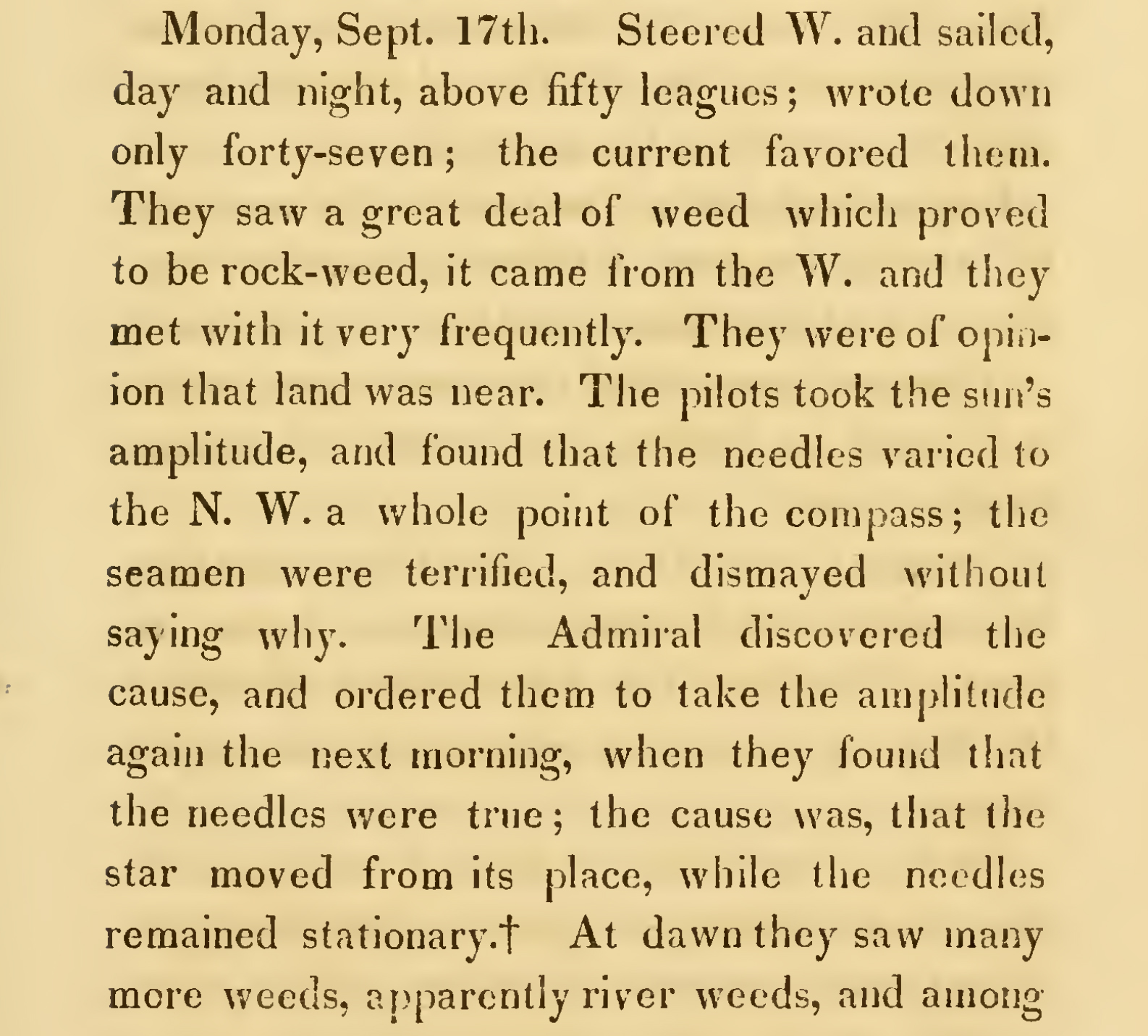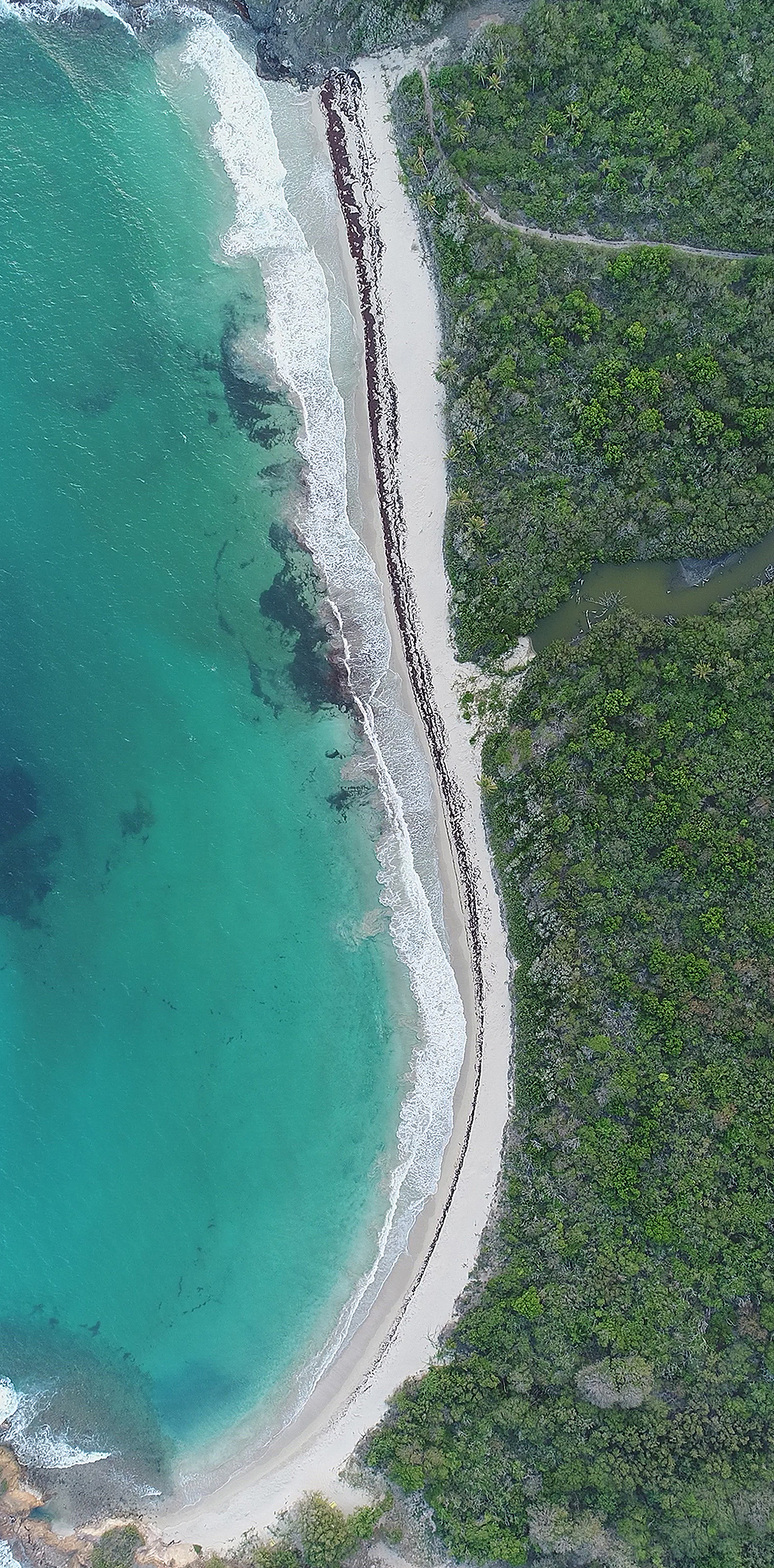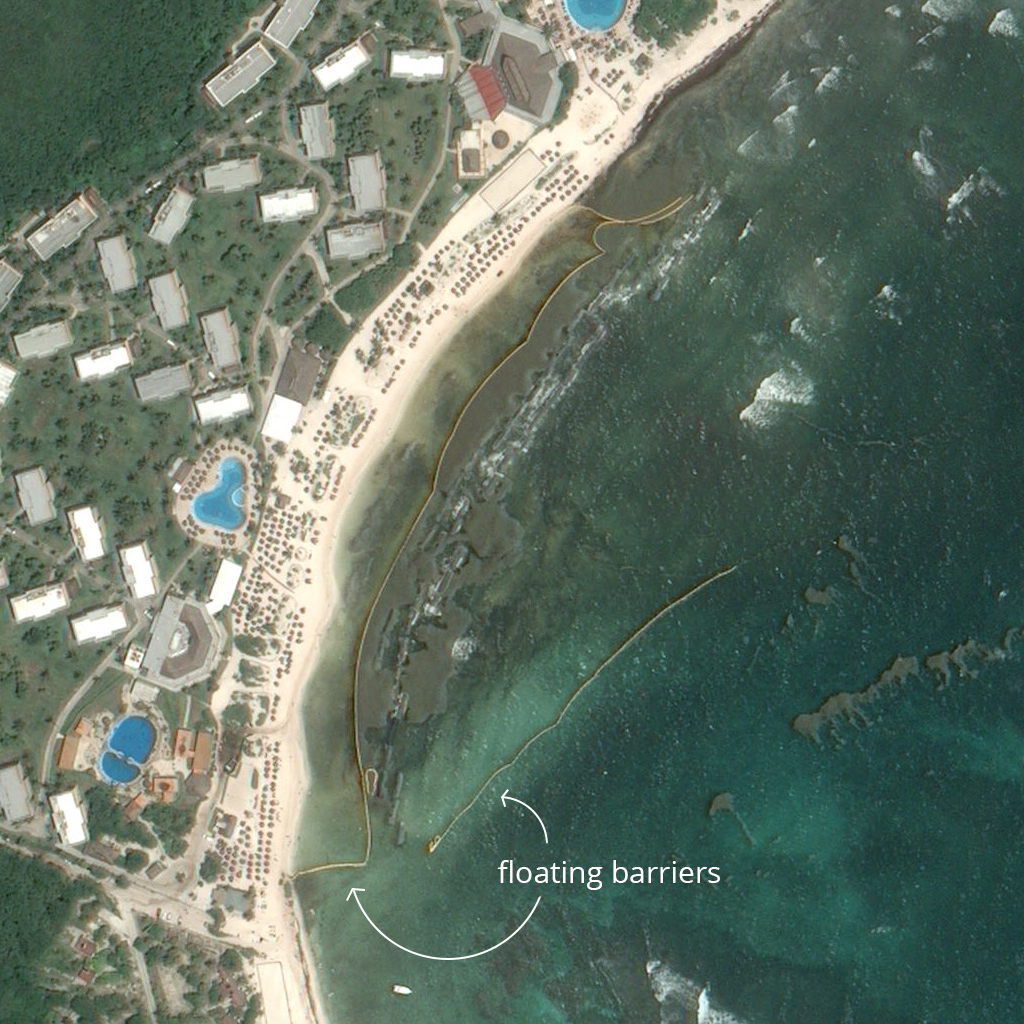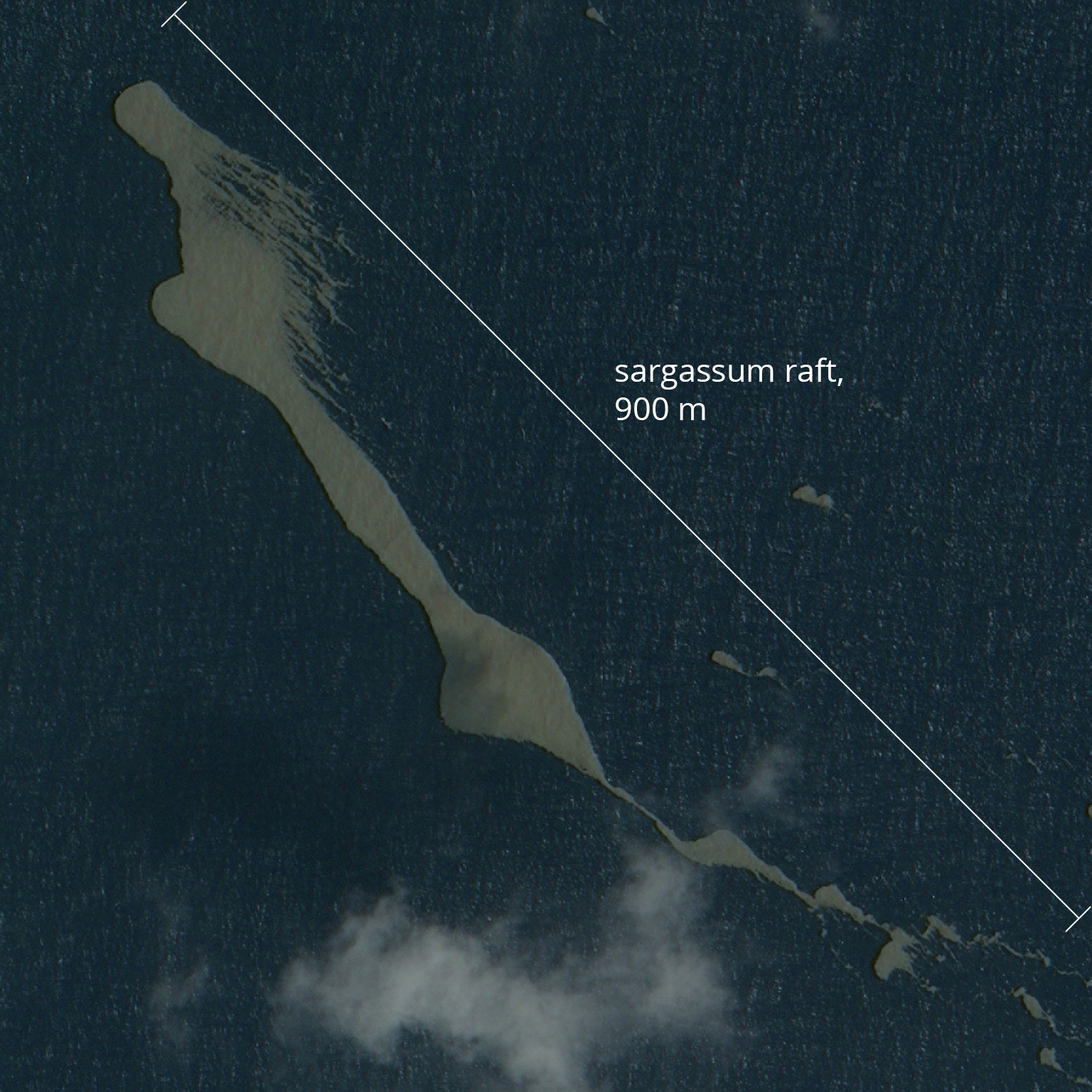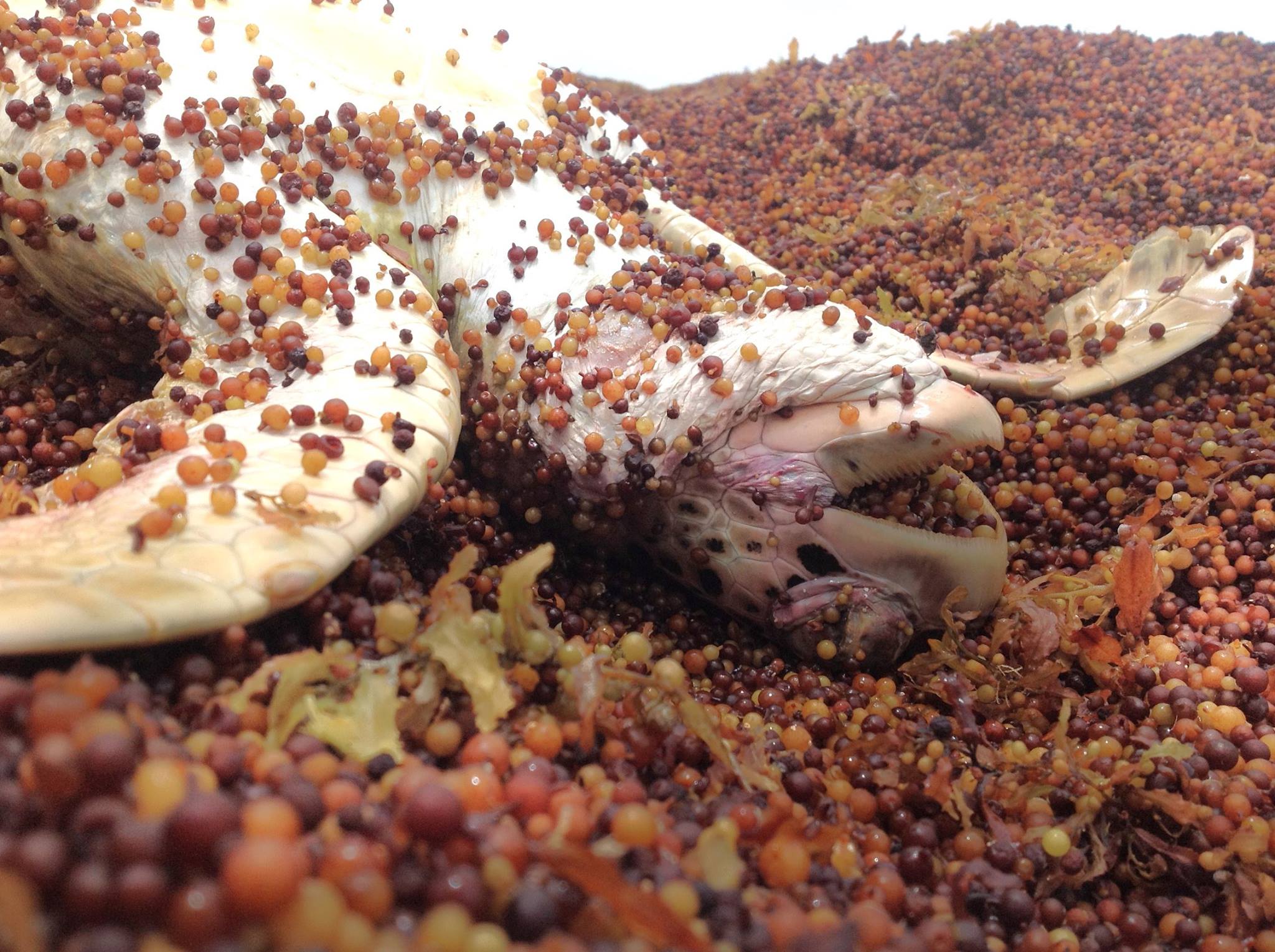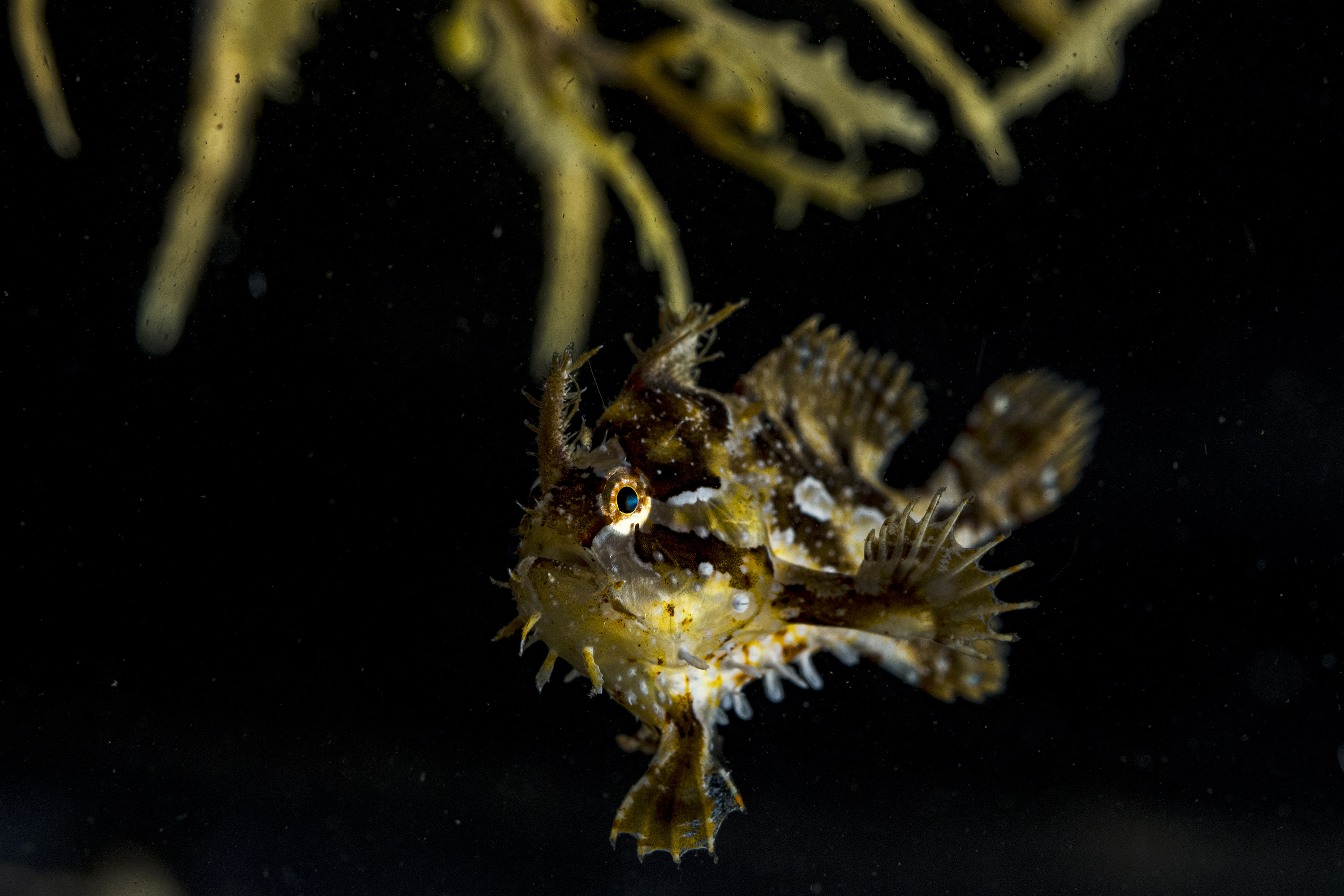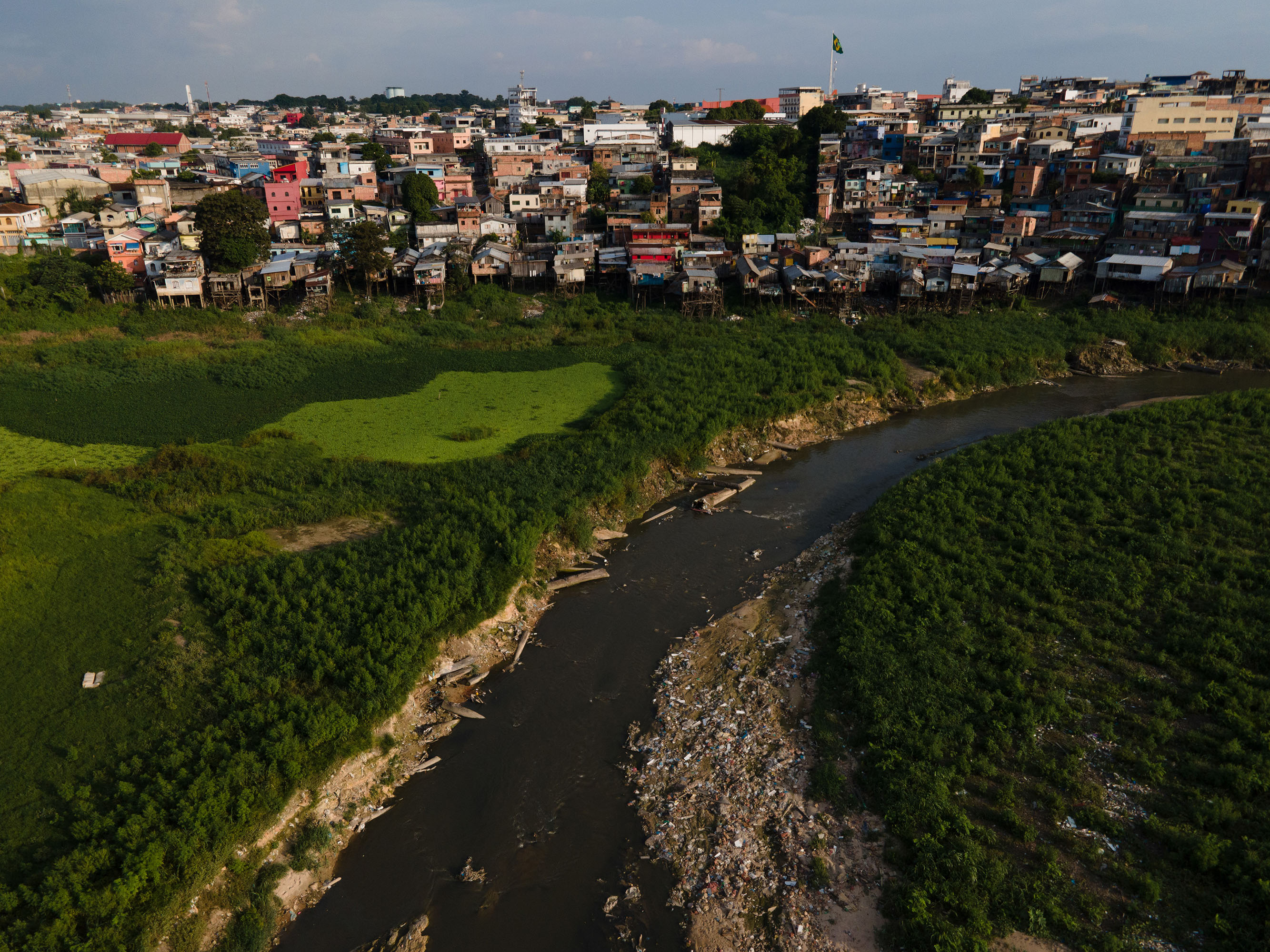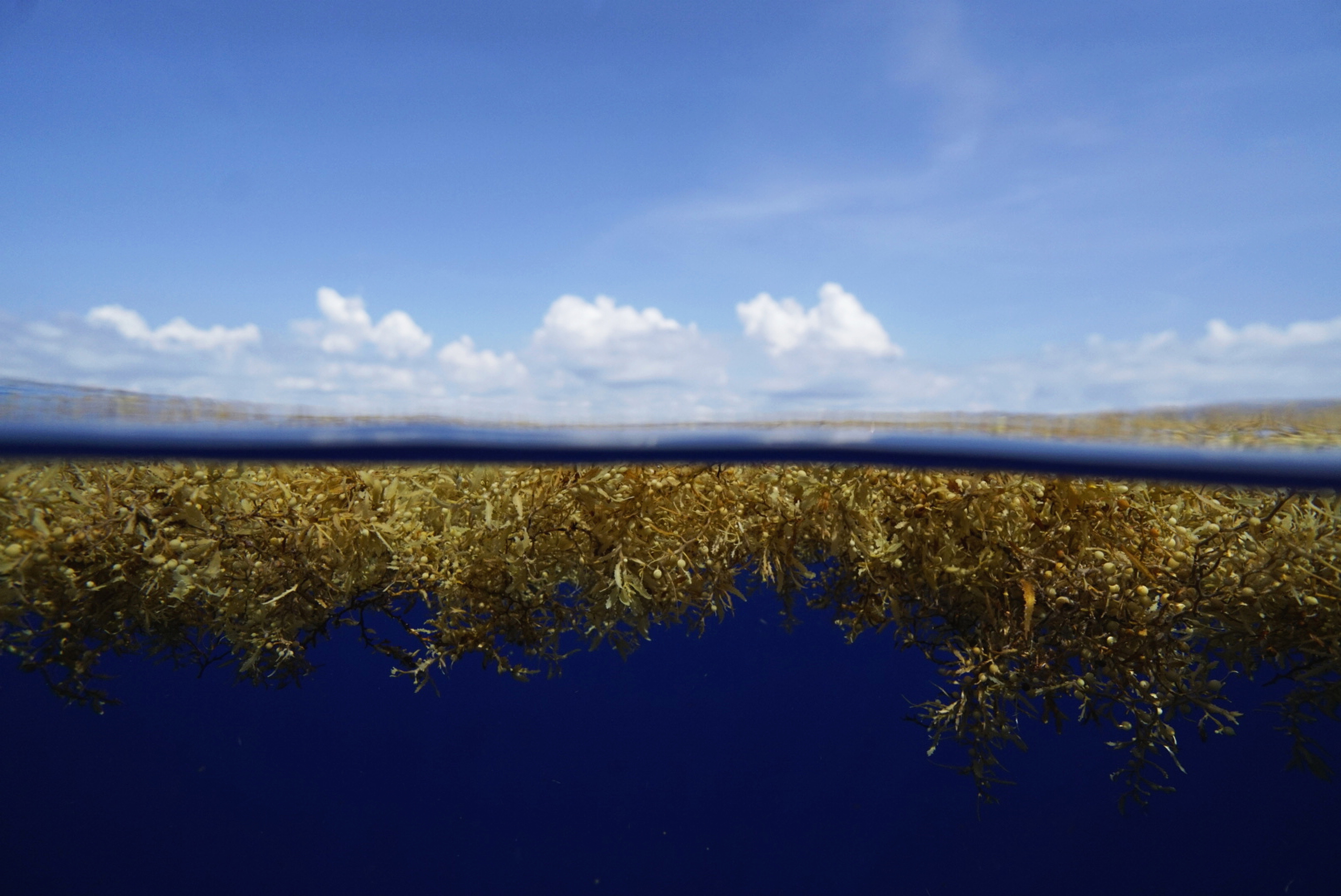Scientists are examining why banks of sargassum in the Atlantic have proliferated explosively over the past decade, fouling the Caribbean and extending to the coast of Africa. Growing discharges of organic pollutants from the Amazon River are now believed to be a major cause.
A familiar sight to Atlantic sailors for centuries, floating banks of sargassum algae have expanded over the past decade in the Caribbean Sea, swamping touristed beaches with foul-smelling mats of decaying plant matter. Scientists now believe that sediments from forest destruction, illegal mining operations, and agricultural pollution carried out to sea by large South American rivers, particularly the Amazon, and swept north and west by ocean currents are a major cause of this swelling “brown tide”.
When Christopher Columbus made his four Atlantic crossings between 1492 and 1504, he not only confirmed the position of the American continent for the Spanish crown but also registered the first report of an immense mass of macro-algae known as sargassum floating east of the United States and north of Cuba.
Since then, the Sargasso Sea has been a feature of the nautical charts used by those who venture into these tropical waters.
However, since the start of the last decade, sargassum – which clumps together to form large buoyant mats of plant life — has hugely proliferated to the south of the original location observed by Columbus. By mid-2018, they had formed a 9,000-kilometre-long-living bridge between the Caribbean Sea and the African coast, swamping coastlines and beaches with noxious vegetation that turns off tourists, stains the legendarily blue Caribbean waters a sickly brown-yellow color, and greatly alters coastal ecosystems.
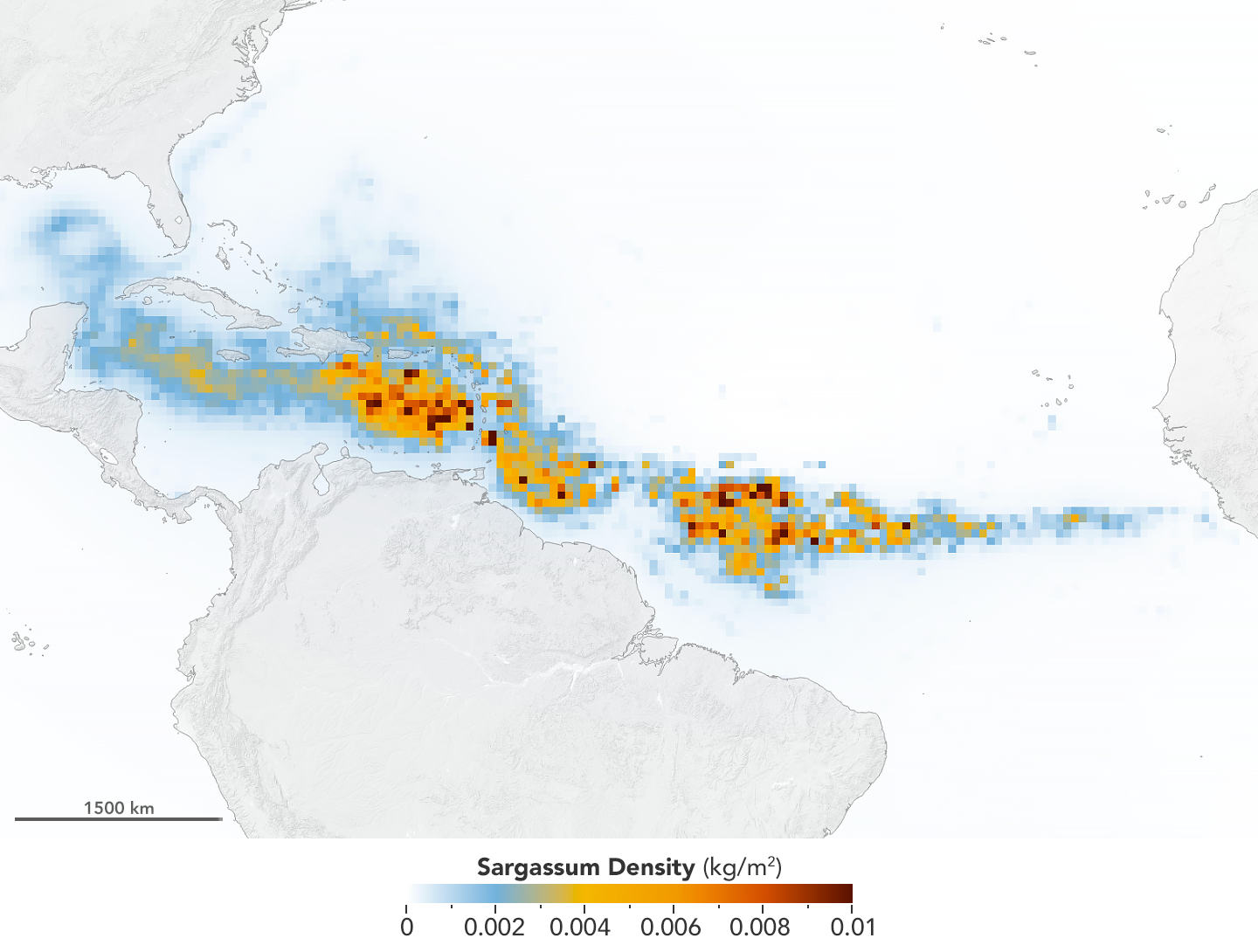
The latest investigations have identified the principal culprit in the growth of sargassum as the discharge of nutrients and pollutants from mighty rivers such as the Amazon in Brazil and the Orinoco in Venezuela, as prevailing ocean currents – which are being altered by climate change — sweep the effluent north to the Caribbean (see graphic).
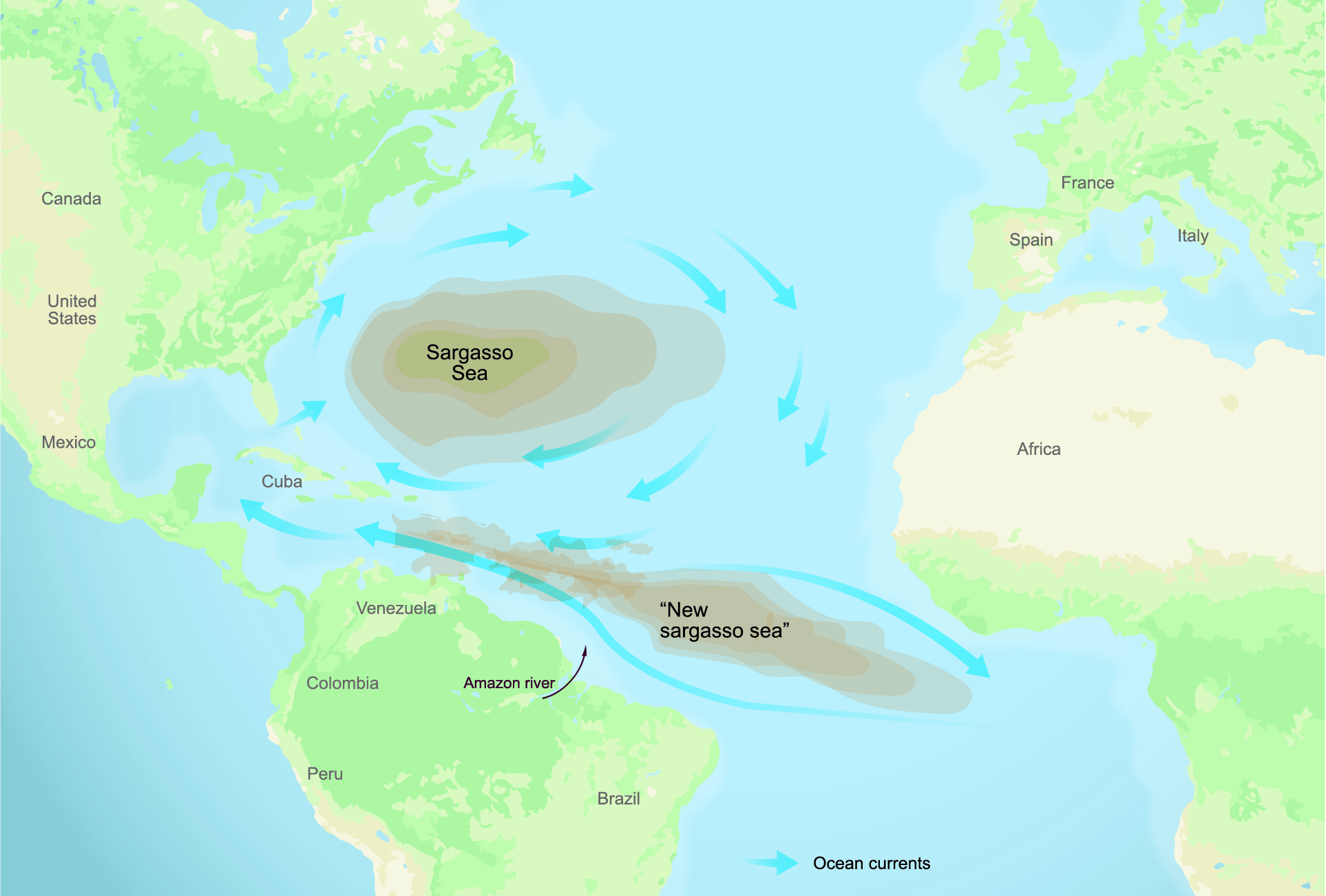
Although there is little data available on the nutrient loads leaving the mouth of the Amazon River – which disgorges an average of 209,000 cubic meters of water into the ocean every second, more than the combined outflow from the world’s next 7 largest rivers – it is believed to be growing rapidly. “A comparison of surface nutrient concentrations measured in the Amazon plume region in spring 2010 and spring 2018 provides direct observation for increased delivery of nitrate and phosphate to the Central West Atlantic,” according to a paper published in Science by Mengqiu Wang and Chuanmin Hu from the University of South Florida. Sampling in the Central West Atlantic shows that the level of nitrates in particular increased sharply over those eight years.
The nutrients of sargassum — such as nitrogen, phosphorus and carbon — come from multiple sources.
“We cannot cite a specific trigger, but the contribution from Brazilian territory is key. With the deforestation of the Amazon, water washes soil and chemical elements into the rivers. Nitrogen is a nutrient of sargassum, and its main sources are agriculture, industries and sewage disposal,” said Carlos Noriega, from the Estuarine and Coastal Physical Oceanography Laboratory of the Federal University of Pernambuco and one of the authors of a study of the expansion of Sargassum.
The contribution from Brazilian territory is key. With the deforestation of the Amazon, water washes soil and chemical elements into the rivers. Nitrogen is a nutrient of sargassum, and its main sources are agriculture, industries and sewage disposal
said Carlos Noriega, from the Federal University of Pernambuco
According to the One Shared Ocean initiative carried out by the United Nations and the European Union, in the year 2000 the level of nitrogen found in the water along the North Brazil Shelf — as this Large Marine Ecosystem (LME) is known — was already considered very high, and according to the same methodology, the group predicts that this level will remain high in the coming decades. The reason they cite? The rapid expansion of the use of agricultural fertilizers in Brazil.
“Human activities in watersheds are affecting nutrients transported by rivers into LMEs. Large amounts of nutrients (in particular nitrogen load) entering coastal waters of LMEs can result in high biomass algal blooms, leading to hypoxic or anoxic conditions [when waters become devoid of oxygen], increased turbidity and changes in community composition, among other effects,” says the assessment on the health of the North Brazil Shelf.
Meanwhile, the paper published by University of South Florida researchers showed that the use of agricultural fertilizers in Brazil grew by 67% between 2011 and 2016 (see graph). Usage remains high to support expanded soybean, corn, sugar cane, and coffee production.
The explosive macro-algae growth could also be considered a warning sign about increased deforestation in the Amazon basin. After reaching its lowest level of 4,600 km² per year in 2012, deforestation has grown to 11,100 km² last year alone, causing more erosion and sediments to run off into the rivers and eventually out to sea.
Altogether, about 17% of the Brazilian portion of the Amazon rainforest has already been lost, largely due to agriculture and livestock in the states of Pará, Mato Grosso, Rondônia, and Amazonas. Since 1985, according to MapBiomas, this activity has eaten up 445,000 km² of the rainforest, an area larger than the state of California.
Healthy rivers, healthy ocean
Scientists are still debating the real dimension of the sediment load that reaches the ocean through the Amazon River and the contribution of human activities to the nutrient load, especially nitrogen. But the LME study estimates that the discharge of nitrogen by large rivers will continue to feed the proliferation of algae along the Venezuelan to the Brazilian coasts over the coming three decades.
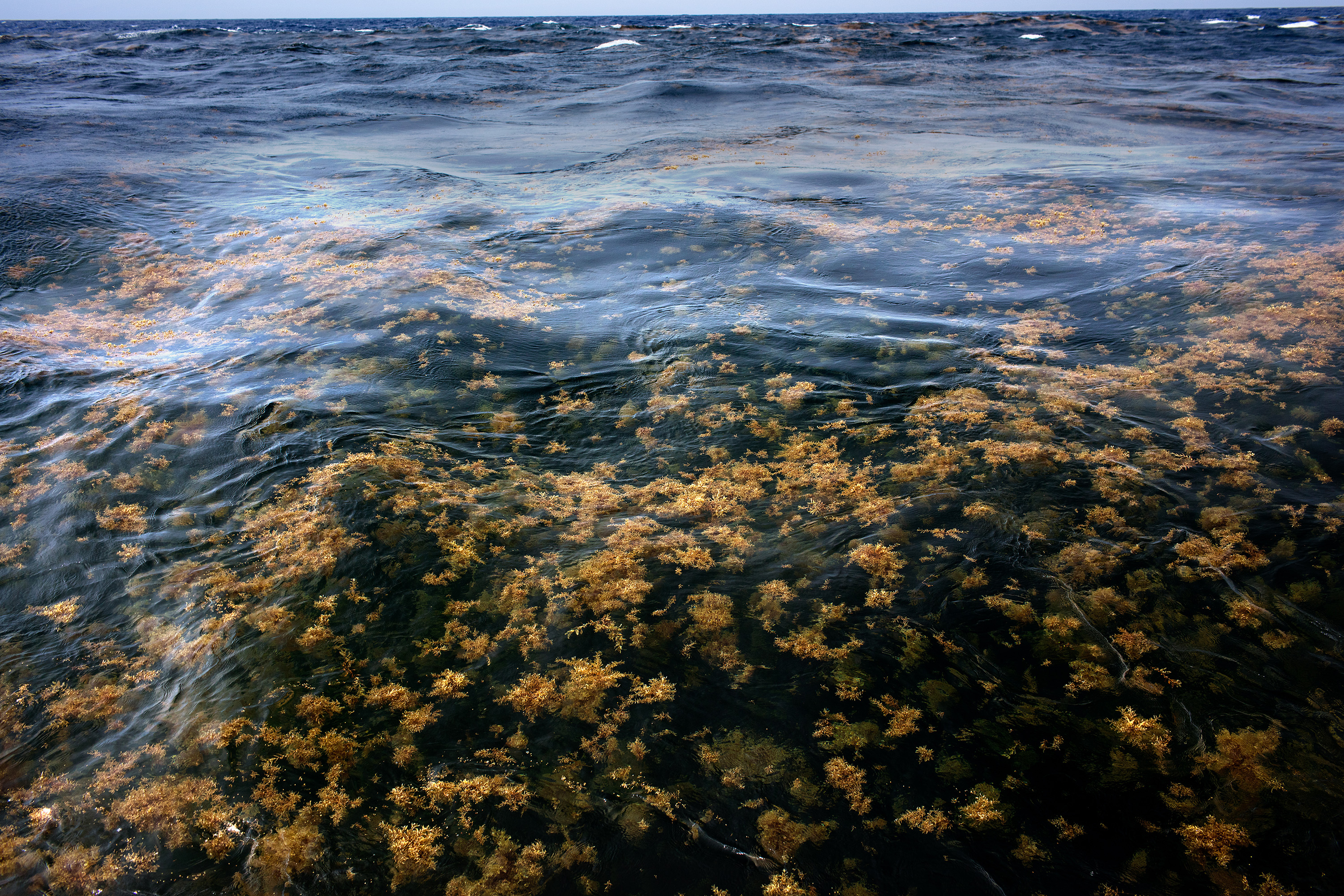
In 2010, researcher Emilio Mayorga, from Washington State University, published the NEWS (Nutrient Exports from Watersheds) model, a tool for measuring dissolved nitrogen in watersheds. The methodology is now being adopted in large-scale studies — such as the one that determined the high concentration of nitrogen in 2000 off the northern coast of South America.
According to Mayorga’s study published in 2016 in partnership with researchers at the University of California, most of the nitrogen found in South American waters today comes from manure and sewage, unlike areas in Asia where the origin is predominantly fertilizers. However, this same study predicts that the nitrogen load will grow by 45% by 2050, mainly due to increased fertilizer use. The Amazonia region in Brazil has the worst national indicators for basic sanitation, and it does the least to collect and properly dispose of urban and rural sewage. Streams flowing through regional cities carry garbage and sewage into the Amazon and many other rivers.
In addition to taking advantage of the “food” brought by large riverine sources, the growth of sargassum is stimulated by waters warmed by climate change. Changes in global temperature also alter marine currents, spreading algae and other plants to new regions. On the other side of the Atlantic, discharges from the Congo River and sand from the Sahara carried by winds can increase algae growth. But these seem to be less of a factor when it comes to feeding the sargassum that affects the Caribbean.
“Among the datasets on sargassum that need further investigation are the contribution to the phenomenon arising from the real deposition of dust on the seas and oceans, the availability of nutrients in surface waters, and how the plant responds to these various associated factors,” explains Chuanmin Hu, one of the researchers at the University of South Florida.
Among the datasets on sargassum that need further investigation are the contribution to the phenomenon arising from the real deposition of dust on the seas and oceans, the availability of nutrients in surface waters, and how the plant responds to these various associated factors
explains researcher Chuanmin Hu, from the University of South Florida.
He is the co-author of a study looking into the marine macro-algae blooms published in Science in July, 2019. Evaluating 19 years of NASA satellite images, this research confirms that the proliferation of sargassum has been gaining strength since 2011 and that its principle nutrient sources are, in the west, large rivers such as the Amazon and the Orinoco, and, in the east, the uprising of deep, saltier waters off the African coast.
Globalized algae
This phenomenon of pollution flowing out from rivers and causing algae blooms, anoxic conditions and other impacts occurs in many other regions. The outflow of sediments and nutrients from the Mississippi River, in one of the most famous examples, has led to 17,000-square-kilometer “dead zone” in the Gulf of Mexico. And although sargassum causes economic and ecological damage to Caribbean coastlines, it also harbours various marine species and captures carbon from the atmosphere.
Sargassum and other types of algae, either floating or attached to the seabed, have proliferated in many parts of the planet. Floating mats have also appeared along the coasts of countries such as the United States, China, India, and France. In 2008, an explosion of green algae even affected competitions at the Beijing Olympics.
The biggest economic impacts of this particular phenomenon are in the damage it is causing to tourism in Caribbean countries like Mexico, Jamaica, Belize and the Dominican Republic. Sargassum washes up and rots on beaches, islands and resorts in the region. Cancún was closed for months last year due to the COVID-19 pandemic, but there are concerns that the algae infesting the fashionable Mexican beach resort is also causing a decline in tourism arrivals.
Another story in this series, by Mexican journalist Alejandro Castro from the state of Quintana Roo, where Cancún is located, shows that in 2018 and 2019, the accumulation of algae on the beaches of the resort had a serious economic impact. The impact may grow in 2021, as the amount of macro-algae observed this January was three times greater than in January 2019. Cáncun is advertised as a coastline of white sand and turquoise blue sea. But with the arrival of the sargassum, the locals speak of a “brown tide.”
In Brazil itself, sargassum has started to swamp the coasts of northern and north-eastern states. In 2015, the profusion of macro-algae closed the beaches for several weeks on the archipelago of Fernando de Noronha. The previous year, an 800-kilometer-long belt of another species of algae dyed the coasts of Santa Catarina, São Paulo, and Rio de Janeiro black and green. The bloom was recorded by NASA.
The phenomenon of sargassum should not be over-simplified as there are major causes to be found in several regions of the globe, such as countries cutting down their forests, and climate change. Problems like these create favourable conditions for the explosion of algae populations across the planet
explained Paulo Horta, from the Federal University of Santa Catarina.
The other side of the coin
Floating in seas and oceans supported by small bladders filled with air, as if they were natural buoys, sargassum has not yet met with predators equal to their amazing ability to spread. On Caribbean islands such as Barbados, the weight of sargassum has buried turtles and other marine species.
But these plants do also serve as shelter and food for several permanent or temporary inhabitants. Fish, birds, lobsters, shrimp, and other living beings are supported by this ecosystem. Anglerfish or frogfish (Histrio histrio) imitate the colors and shapes of sargassum, from which they never stray. Algae blooms in the United States have been an essential habitat for fish since 2003.
Sargassum serves as a “bridge between continents” for migratory species such as turtles and fish. It can fertilize dunes and maintain the stability of the coastline. It is used in teas and soups, as a fuel, and is a possible source of pharmaceutical inputs. In addition, like other plants, it absorbs carbon that it removes from the atmosphere through photosynthesis for food and growth.
“If the large amount of biomass produced by the algae ends up in the deep sea, a large amount of carbon will be trapped there, without returning to the atmosphere, thus helping to counter the climate crisis. However, the relationship between sargassum and global climate change needs further study,” says Maria Teresa Széchy, PhD in Biological Sciences from the University of São Paulo and a lecturer at the Federal University of Rio de Janeiro. For instance, the sargassum blooms have been implicated in the killing off of Caribbean seagrass beds, an important carbon sink.
Clarifying the cause of its proliferation and designing other uses for sargassum depends not just on more scientific studies, but also on public policies that could make economic development go hand in hand with environmental protection. For this reason, researcher Carlos Noriega argues for greater control over deforestation, a reduction in the use of fertilizers, and better sewage treatment, especially in the Amazon Basin.
“If immediate measures are not taken, the proliferation of sargassum can become never-ending. Everything is interconnected and everyone – scientists, politicians, and the general public – is responsible for the well-being of the planet,” said the expert from the Estuarine and Coastal Physical Oceanography Laboratory of the Federal University of Pernambuco. Only with more government support, public awareness, and the watchful eyes of journalists and scientists will we avoid other phenomena like this.”
This story was produced by InfoAmazonia with support from Internews’ Earth Journalism Network. It was translated by Tony Gross and edited by James Fahn.
Banner Image: Peter Cross / Greenpeace


